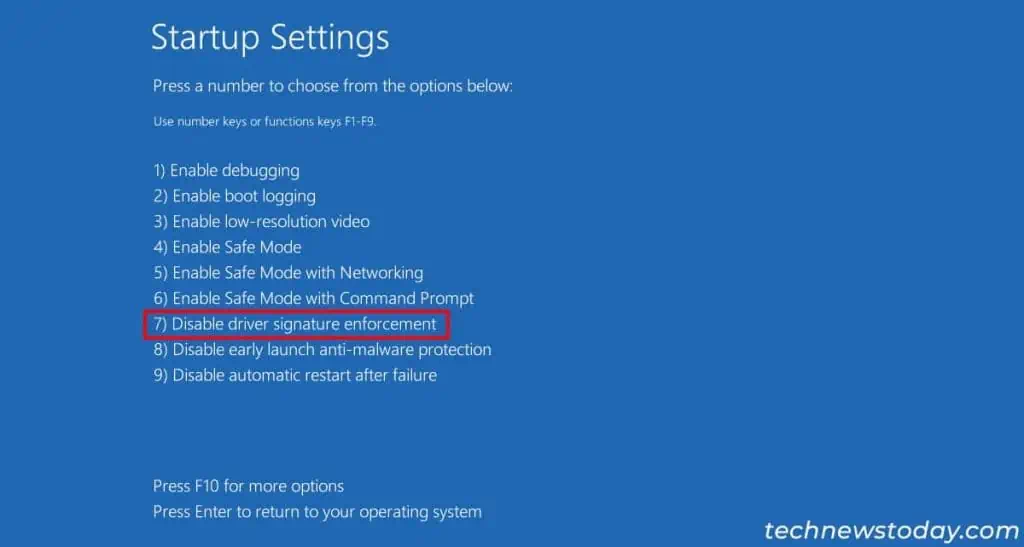Driver signatures verify the integrity of the driver software and their developers. Windows enforces the verification of driver signatures before installing or loading them as a security measure.
While this enforcement does protect your system against malicious threats, you may have to disable it in two situations. First– if you need toinstall a driver without a valid driver signature, and second– as a temporary fix forspecific Blue Screen of Death (BSOD) loops.
Even then, only disable it temporarily. For all other situations, you shouldn’t touch this feature as it’s an important security feature.

Let’s discuss everything in detail.
What Does Driver Signature Enforcement Do?
Whenever you try toinstall or update a driver file, the driver signature enforcement featurewill not allow the installationif,
Also, after yourUEFI firmwareloads the OS, it verifies your critical device drivers by checking their digital signature. If it finds anomalies, you will bestuck in a BSOD loopand can’t boot to Windows.

What Happens When I Disable Driver Signature Enforcement?
If you disable driver signature enforcement, your system bypasses both of the above verification processes. This comes with the following pros and cons:
When to Disable Drive Signature Enforcement?
Microsoft may not have recorded the signatures of someless-known printers, scanners, andwebcam drivers. you may temporarily disable the device signature enforcement to install such unsupported drivers.
Also, if youexperience some BSODslike 0xc000021a, disabling this enforcement may allow you to access Windows. you may disable it until you figure out the proper solution to such issues.
If you do wish to disable this feature, check out myHow to Disable Driver Signature Enforcementguide for the necessary methods.